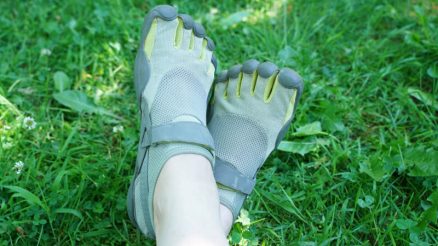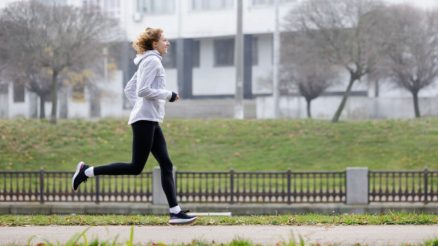Running is a rewarding and accessible form of exercise, but the repetitive impact and physical demand can take a toll on the body over time. Whether you’re a casual jogger or training for your next marathon, incorporating effective recovery strategies is essential for maintaining performance, preventing injury, and promoting long-term health. Below is a comprehensive and organized guide outlining the most effective recovery techniques for runners:
1. Sleep: The Cornerstone of Recovery
Sleep is arguably the most powerful recovery tool available to runners. During deep sleep, the body repairs damaged tissues, restores energy stores, and regulates essential hormones such as human growth hormone and cortisol.
Key Tips:
- Aim for 7–9 hours of uninterrupted sleep each night.
- Stick to a regular sleep schedule—even on weekends.
- Consider short 20–30 minute naps after long or high-intensity runs.
- Create a sleep-conducive environment: cool, dark, and quiet.
2. Post-Run Nutrition: Rebuilding from Within
Proper nutrition accelerates muscle repair and replenishes energy. Ideally, consume a post-run meal or snack within 30–60 minutes of finishing.
Macronutrient Breakdown:
- Carbohydrates: Replenish glycogen stores used during the run.
- Protein: Supports muscle repair and growth (aim for 0.14–0.23g per pound of body weight).
- Healthy Fats: Help reduce inflammation and aid nutrient absorption.
Recommended Post-Run Snacks:
- Greek yogurt with berries and honey
- Peanut butter and banana on whole grain toast
- Protein smoothie with spinach, chia seeds, and almond milk
3. Hydration: Replenishing Fluids
Even mild dehydration can negatively impact performance and delay recovery. Proper hydration helps regulate body temperature, lubricate joints, and transport nutrients.
Hydration Guidelines:
- Drink 16–24 oz of fluid for every pound of body weight lost through sweat.
- Use electrolyte drinks if the run was over 60 minutes or in hot conditions.
- Monitor urine color—pale yellow indicates proper hydration.
4. Active Recovery: Gentle Movement for Circulation
Active recovery involves low-intensity exercise to promote circulation and accelerate the removal of metabolic waste.
Suggested Activities:
- Walking or light jogging
- Swimming
- Cycling at a leisurely pace
- Yoga or tai chi
Benefits:
- Reduces stiffness and soreness
- Increases blood flow to muscles
- Promotes joint mobility
5. Stretching and Myofascial Release
Tight muscles can hinder performance and increase injury risk. Incorporating mobility work helps maintain flexibility and range of motion.
Stretching Tips:
- Perform dynamic stretches (e.g., leg swings, lunges) before running.
- Engage in static stretches (e.g., hamstring or quad stretches) after your run.
Foam Rolling Focus Areas:
- Calves
- Hamstrings
- Quadriceps
- IT Bands
6. Rest Days: Essential for Adaptation
Rest is when your body adapts and becomes stronger. Without it, runners are more susceptible to overtraining and injury.
How to Structure Rest:
- Schedule at least one full rest day per week.
- Listen to your body—take an additional day off if you’re unusually fatigued.
- Use rest days for mental rejuvenation and cross-training if desired.
7. Recovery Tools and Modalities
Enhance recovery using tools and methods that target muscle soreness, circulation, and inflammation.
Popular Options:
- Massage Guns: Break up muscle knots and promote circulation.
- Compression Garments: Aid venous return and reduce muscle vibration.
- Cold Therapy: Ice baths or cryotherapy can decrease inflammation.
- Epsom Salt Baths: Soothe muscle tension and improve relaxation.
- Percussive Therapy and TENS Units: For targeted relief and nerve stimulation.
8. Training Load Management
Recovery is directly influenced by how you structure your training. A well-balanced plan considers intensity, volume, and recovery periods.
Monitoring Techniques:
- Use apps or journals to track workouts and rest.
- Apply the 10% rule: Increase weekly mileage by no more than 10%.
- Include periodization cycles with planned deload weeks.
Signs of Overtraining:
- Persistent fatigue
- Decline in performance
- Mood changes
- Increased resting heart rate
9. Professional Support and Preventive Care
Sometimes, recovery needs go beyond self-care. Seeking expert guidance can provide tailored strategies and prevent future setbacks.
Professionals to Consider:
- Physical Therapists: For injury prevention and rehab.
- Sports Massage Therapists: For deep tissue relief and alignment.
- Running Coaches: For personalized training plans.
- Dietitians: For performance-based nutritional planning.
10. Consistency is Key
Recovery isn’t a one-time fix—it’s a lifestyle. By making recovery a non-negotiable part of your training, you’ll set yourself up for long-term success and enjoyment of the sport.
Consistency Checklist:
- Get adequate sleep nightly
- Refuel properly after every run
- Hydrate consistently
- Stretch and foam roll routinely
- Take rest days seriously
Final Thoughts
Runners often focus heavily on distance, pace, and goals. But it’s recovery that ensures sustainable progress, resilience, and injury prevention. By weaving these evidence-based strategies into your training routine, you’ll not only recover faster but also improve overall performance and longevity in running.
Take care of your body today so it can carry you farther tomorrow.








